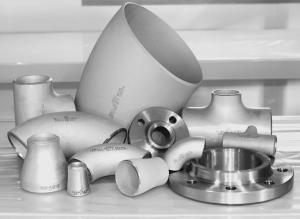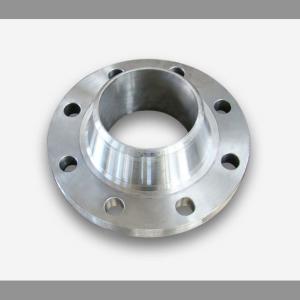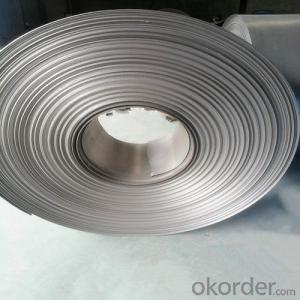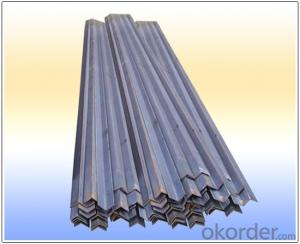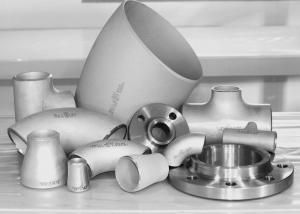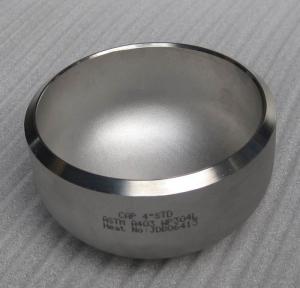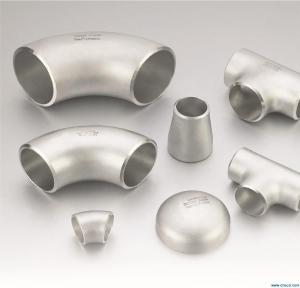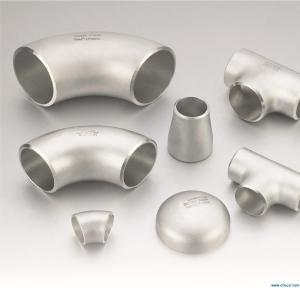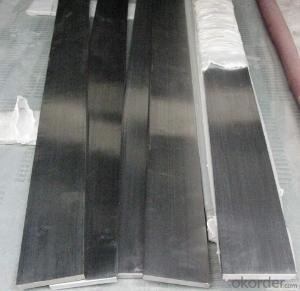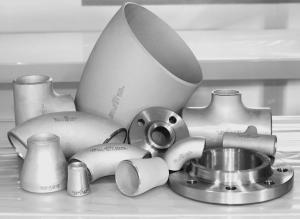Stainless Steel Slip-on Welding Flanges
- Loading Port:
- China Main Port
- Payment Terms:
- TT or LC
- Min Order Qty:
- 5 Pieces pc
- Supply Capability:
- 10000 Pieces Per Month pc/month
OKorder Service Pledge
OKorder Financial Service
You Might Also Like
Stainless Steel Fittings
Specifications Features:
1) Carbon steel fitting and stainless steel fitting
2) Standard: ASME, ANSI, API, JIS
1. BUTT WELDED FITTING:
2. Production acc. to the standard of GB /ASTM / ASME / DIN / JIS
ASTM B 16.9 /16.11 B 16.28 JIS B 2311/2220 DIN2617/2616/2615/2391
3. Types: Elbows, seamless and welded, LR & SR ,Bend -Equal and reducing Tees,
seamless and welded - Concentric and eccentric Reducers,seamless and welded -Caps
4. Wall thickness: From Sch5 up to Sch160/STD/XS/XXS
5. Material Grades: A403,WP304, WP304L, Wp316, WP316L, A234WPB
6. Dimensions: Seamless: from 1/2' up to 24'
7. size: From 1/2" up to 72"
Outer packing:Seaworthy plywood case
|
Grade |
TP304,TP304L,TP321,TP316L,TP310S etc. |
|
connection |
welding |
|
techniques |
forged |
|
Surface finishing |
180/240/320/400 grit |

- Q:How do stainless steel flats fare in terms of cost compared to other materials?
- Stainless steel flats are generally considered to be cost-effective compared to other materials used in various industries. While the initial cost of stainless steel may be higher than some other materials, such as carbon steel or aluminum, its long-term benefits and durability outweigh the initial investment. Stainless steel flats have excellent corrosion resistance, making them suitable for a wide range of applications, including construction, automotive, food processing, and pharmaceutical industries. The resistance to rust and staining helps to reduce maintenance costs and increases the longevity of the material. In contrast, other materials may require frequent maintenance or replacement due to corrosion or degradation. Additionally, stainless steel flats offer high strength and toughness, which further contribute to their cost-effectiveness. Their ability to withstand heavy loads, extreme temperatures, and harsh environments reduces the need for repairs or replacements, ultimately saving money in the long run. Furthermore, stainless steel's aesthetic appeal and hygienic properties make it a preferred choice in industries where cleanliness and visual appeal are important. Its easy maintenance and cleaning properties eliminate the need for expensive cleaning agents or specialized equipment, further reducing costs. While the exact cost of stainless steel flats may vary depending on factors such as grade, size, and market conditions, they are generally considered a worthwhile investment due to their longevity, durability, and low maintenance requirements.
- Q:How do you prevent staining on stainless steel flats?
- To prevent staining on stainless steel flats, there are several measures you can take: 1. Regular Cleaning: Clean the stainless steel flats regularly using mild soap or detergent and warm water. Avoid using abrasive cleaners or scrub brushes that can scratch the surface. Wipe the flats dry with a soft cloth to prevent water spots. 2. Avoid Harsh Chemicals: Do not use cleaners or chemicals that contain chlorine or bleach, as they can corrode the stainless steel and cause stains. Instead, opt for cleaning solutions specifically designed for stainless steel surfaces. 3. Use Non-abrasive Tools: When cleaning or removing stains, use non-abrasive tools such as soft sponges or microfiber cloths. Avoid using steel wool or abrasive scrub pads that can scratch the stainless steel surface, making it more prone to staining. 4. Apply Protective Coatings: Consider applying a protective coating or sealant to the stainless steel flats. These coatings create a barrier that prevents stains and makes it easier to clean the surface. However, ensure that the coating is specifically designed for stainless steel and follow the manufacturer's instructions for proper application. 5. Remove Stains Promptly: If you notice any stains, it is essential to address them promptly. Most stains on stainless steel flats can be removed with a mixture of vinegar and water, or specialized stainless steel cleaners. Gently scrub the stained area with a soft cloth or sponge, following the grain of the stainless steel, and rinse thoroughly. 6. Avoid Contact with Harsh Substances: Avoid exposing stainless steel flats to harsh substances like strong acids, salts, or abrasive materials. These can cause chemical reactions or scratches that lead to staining. Ensure that the flats are not in direct contact with items or liquids that may cause damage. By following these preventive measures and regular maintenance, you can effectively reduce the risk of staining on stainless steel flats, keeping them looking clean and polished for an extended period.
- Q:How is stainless steel flat manufactured?
- Hot rolling is the typical method for manufacturing stainless steel flat. Initially, large stainless steel slabs are heated to a high temperature and then fed through a series of rolling mills. These mills exert pressure on the heated slabs, gradually decreasing their thickness and shaping them into flat strips. Throughout the hot rolling process, the stainless steel slabs are continuously fed through the rolling mills, which consist of rotating cylinders with decreasing gaps between them. The rollers apply pressure, compressing and elongating the stainless steel, resulting in a thinner and longer flat product. To prevent the stainless steel from sticking to the rollers, lubricants or coolants are commonly used during hot rolling. This reduces friction and heat, ensuring a smoother and more efficient manufacturing process. Once the desired thickness is achieved, the stainless steel flat strips are cooled and further processed to eliminate any surface defects or imperfections. Additional heat treatment, pickling, or surface finishing processes may be employed depending on the specific requirements of the final product. In conclusion, the hot rolling process is crucial for manufacturing high-quality stainless steel flat. It enables precise control over thickness, shape, and surface quality, making stainless steel a versatile material widely utilized in various industries.
- Q:How do stainless steel flats perform in outdoor exposure?
- Stainless steel flats are renowned for their exceptional performance when exposed to the outdoors. Their ability to endure harsh environmental conditions, such as rain, humidity, and temperature fluctuations, is due to their high resistance to corrosion. This makes them highly suitable for outdoor applications where durability and longevity are crucial. The presence of chromium in stainless steel results in the formation of a protective layer on the surface, referred to as the passive film. This film acts as a barrier against corrosion and prevents the metal from rusting. What sets it apart is its ability to self-repair. If the film becomes damaged, it can regenerate itself quickly, ensuring continuous protection. Moreover, stainless steel flats offer resistance to UV radiation, making them perfect for use in outdoor structures and equipment exposed to direct sunlight. They do not fade, crack, or deteriorate under the sun's rays, ensuring their aesthetic appeal and structural integrity over time. In addition to their corrosion and UV resistance, stainless steel flats possess other favorable characteristics for outdoor use. They exhibit high strength and toughness, enabling them to withstand heavy loads and impacts. Additionally, they are fire-resistant, further contributing to their safety when utilized in outdoor applications. All in all, stainless steel flats excel in outdoor exposure due to their corrosion resistance, UV resistance, durability, and strength. These qualities make them a reliable and long-lasting choice for a diverse range of outdoor applications, including architectural structures, marine equipment, outdoor furniture, and many others.
- Q:Can stainless steel flats be used in chemical storage tanks?
- Indeed, chemical storage tanks can utilize stainless steel flats. Stainless steel showcases exceptional resistance against corrosion and can endure exposure to a diverse array of chemicals, rendering it an optimal substance for securely storing chemicals. It presents remarkable resilience to both organic and inorganic chemicals, encompassing acids, alkalis, and solvents. Furthermore, stainless steel is effortless to cleanse and uphold, guaranteeing the untarnished state and soundness of the chemicals stored within. As a result, stainless steel flats are frequently employed in the fabrication of chemical storage tanks to ensure their enduring robustness and safety.
- Q:How do stainless steel flats resist corrosion in marine environments?
- Stainless steel flats resist corrosion in marine environments due to the presence of chromium in the alloy. Chromium forms a passive oxide layer on the surface of stainless steel, which acts as a protective barrier against corrosion caused by saltwater and other harsh marine conditions.
- Q:How do I calculate the moment of inertia for a stainless steel flat with holes?
- To calculate the moment of inertia of a stainless steel flat with holes, one must consider the individual moments of inertia for each component of the object. Firstly, one should determine the moment of inertia for the solid stainless steel flat. This can be achieved by using the formula I = (1/12) * m * (h^2 + b^2), where m represents the mass of the plate, h denotes the height, and b signifies the width. Subsequently, the moment of inertia for each hole in the flat should be calculated. This can be accomplished by utilizing the formula I = (1/4) * m * r^2, where m denotes the mass of the hole and r represents the radius of the hole. Once the moment of inertia for each component has been determined, they can be summed together to obtain the total moment of inertia for the stainless steel flat. It is important to bear in mind that in the case of symmetrically distributed holes, the calculation can potentially be simplified by employing the parallel axis theorem. This theorem states that the moment of inertia of a component about an axis parallel to and at a distance 'd' from the component's centroid is equal to the sum of the moment of inertia about the centroid and the product of the component's mass and the square of the distance 'd'. It should be noted that the accuracy of this calculation depends on the complexity and distribution of the holes in the stainless steel flat. For irregular shapes and non-uniform hole distributions, more advanced mathematical methods, such as numerical integration or computer simulations, may be necessary to obtain an accurate moment of inertia value.
- Q:Can stainless steel flats be used in aerospace applications?
- Stainless steel flats are indeed applicable in aerospace settings. Renowned for its robustness, resistance to corrosion, and lasting power, stainless steel is a suitable material for diverse aerospace elements. It is commonly utilized in the manufacturing of aircraft structures, engine components, and fasteners. The mechanical properties of stainless steel flats are exceptional, boasting high tensile strength and commendable impact resistance. These attributes are of utmost importance in aerospace applications where safety and dependability are paramount. Moreover, stainless steel's ability to endure extreme temperatures and harsh environmental conditions renders it an ideal choice for aerospace applications, where materials must withstand a wide array of operational circumstances. All in all, stainless steel flats have consistently proven to be a dependable and esteemed material within the aerospace industry.
- Q:40*4 large flat copper instead of copper
- About BVR160-180 mm2 of multicore copper cord
- Q:What are the different types of stainless steel flats used in the transportation industry?
- In the transportation industry, stainless steel flats are used for various applications due to their durability, corrosion resistance, and high strength-to-weight ratio. There are several types of stainless steel flats commonly used in this industry, including: 1. Austenitic Stainless Steel: This type of stainless steel is known for its excellent corrosion resistance and high ductility. It is commonly used in transportation applications such as exhaust systems, fuel tanks, and components for aircraft and marine vessels. 2. Ferritic Stainless Steel: Ferritic stainless steel flats offer good corrosion resistance and high-temperature strength. They are often used in automotive exhaust systems, as well as in components for buses and trucks. 3. Martensitic Stainless Steel: Martensitic stainless steel flats have high strength and hardness, making them suitable for applications that require resistance to wear and abrasion. They are commonly used in the manufacturing of components such as springs, fasteners, and shafts in the transportation industry. 4. Duplex Stainless Steel: Duplex stainless steel combines the properties of austenitic and ferritic stainless steels. It offers high strength, excellent corrosion resistance, and good weldability. This type of stainless steel is used in various transportation applications, including pressure vessels, pipes, and structural components. 5. Precipitation-Hardening Stainless Steel: These stainless steel flats are known for their high strength and excellent corrosion resistance. They are often used in the manufacturing of aerospace components, such as landing gear, turbine blades, and structural parts. It is important to select the appropriate type of stainless steel flat based on the specific requirements of the transportation application. Factors such as corrosion resistance, strength, temperature resistance, and cost should be considered to ensure optimal performance and longevity in the transportation industry.
1. Manufacturer Overview |
|
|---|---|
| Location | Anhui,China |
| Year Established | 2003 |
| Annual Output Value | Above US$16 Million |
| Main Markets | South Korea;Japan; Europe;ASEAN;India |
| Company Certifications | ISO 9001:2000; |
2. Manufacturer Certificates |
|
|---|---|
| a) Certification Name | |
| Range | |
| Reference | |
| Validity Period | |
3. Manufacturer Capability |
|
|---|---|
| a)Trade Capacity | |
| Nearest Port | Shanghai |
| Export Percentage | 70% |
| No.of Employees in Trade Department | 160 People |
| Language Spoken: | English;Chinese;Japanese;Korea |
| b)Factory Information | |
| Factory Size: | Above 300,000 square meters |
| No. of Production Lines | Above 10 |
| Contract Manufacturing | OEM Service Offered;Design Service Offered |
| Product Price Range | Average |
Send your message to us
Stainless Steel Slip-on Welding Flanges
- Loading Port:
- China Main Port
- Payment Terms:
- TT or LC
- Min Order Qty:
- 5 Pieces pc
- Supply Capability:
- 10000 Pieces Per Month pc/month
OKorder Service Pledge
OKorder Financial Service
Similar products
New products
Hot products
Hot Searches
Related keywords
